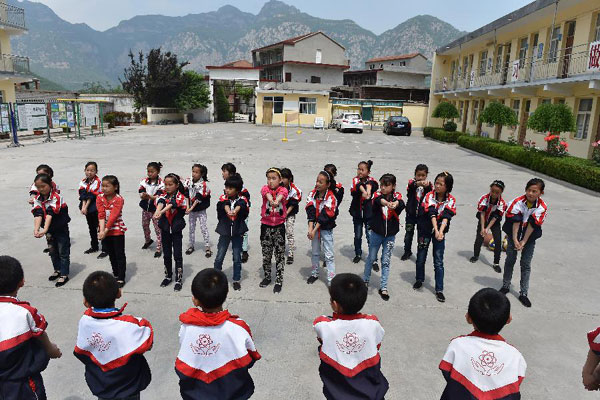Migrant children have right to education
 |
|
Boarders have a PE class at the primary school of Shicheng Township of Pingshun County, north China's Shanxi province, May 26, 2015. The children in the school are mostly left behind children whose parents work outside of their hometown. [Photo/Xinhua] |
A SCHOOL FOR MIGRANT CHILDREN IN SHANGHAI is considering closing because it cannot enroll enough students, as migrant children cannot present a local residence permit to be admitted. China Youth Daily commented on Tuesday:
The sharp decline in the number of students and the tearful migrant parents begging for their kids to be admitted are the result of the Shanghai government tightening its restrictions on migrant workers and their children.
How to rein in the urban population while guaranteeing the right of migrant children to education is not an easy task for the municipal government. But few expected that Shanghai would choose to emulate Beijing's policy by setting up higher thresholds for migrant children to be admitted to public schools, even though many of the schools have more than enough vacancies.
What is even more worrying is that more first- and second-tier cities are likely to follow the lead of Beijing and Shanghai. On the one hand, the central government requires all eligible migrant children to be enrolled in school; on the other hand, it gives urban managers the freedom to make most decisions, including the requirements that migrant students must satisfy for school admission.
This has allowed local governments to get rid of non-local residents under the name of controlling the urban population. They are right to keep the influx of migrants at a reasonable level, but this cannot be done at the expense of migrant children's right to education.
To avoid creating more uncertainties in social governance and promote educational fairness, big cities are obliged to give migrant students equal access to pre-college education.
- Onlookers encouraged migrant teen's fatal jump, say police
- Timely warning over migrant children
- No justification for discrimination toward children of migrant workers
- Nearly 10,000 migrant students sit for gaokao in Guangdong
- Migrant children learn a tough lesson
- Migrant kids going home for Spring Festival
- Migrant children face tighter admission rules



















